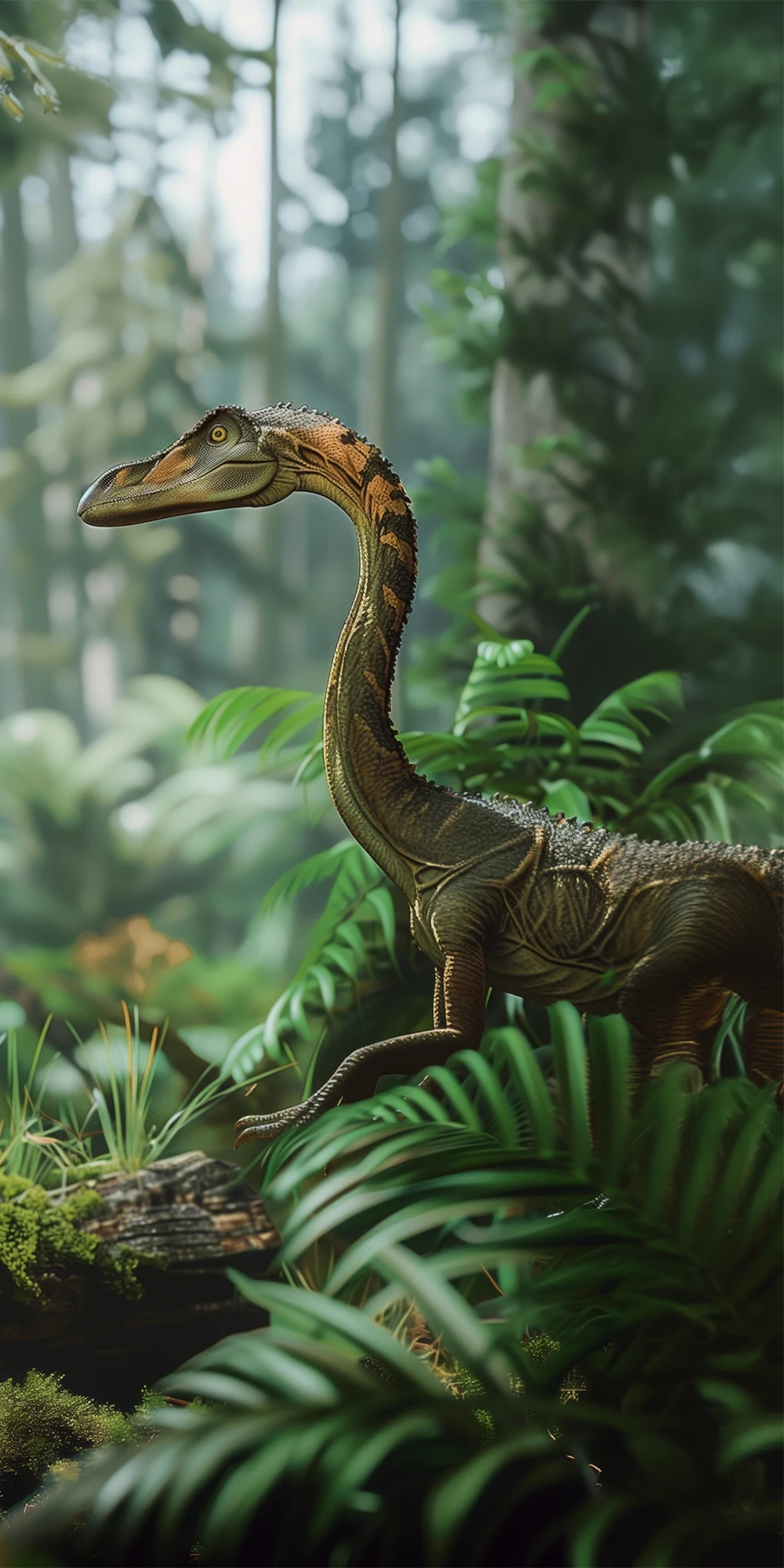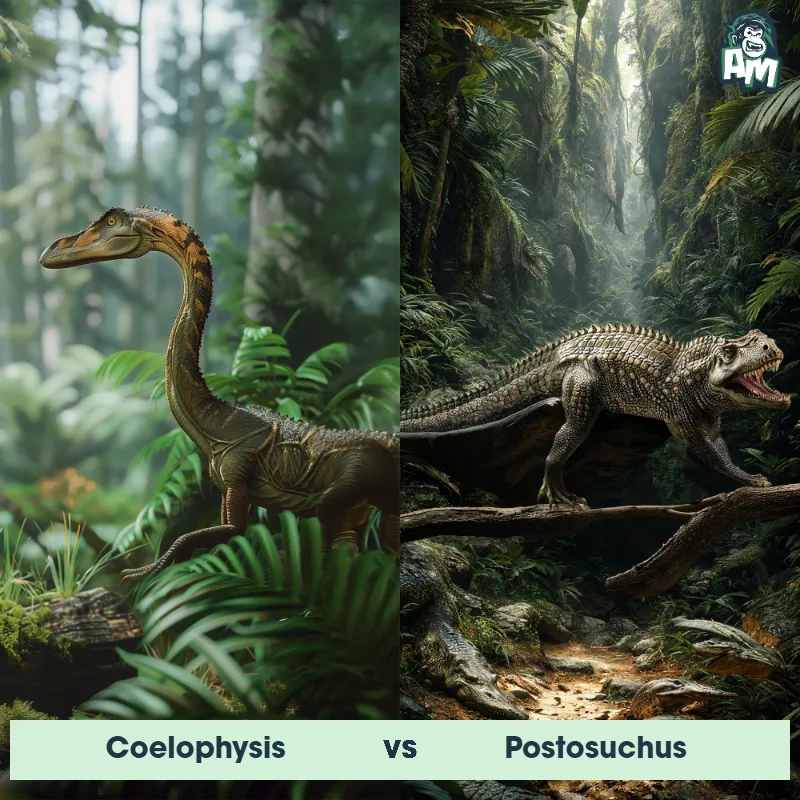The Coelophysis
The Coelophysis, also known as the "hollow form," was a small carnivorous dinosaur that lived during the Late Triassic period. It was characterized by its slender build, long neck, sharp teeth, and three-toed feet with a fourth vestigial toe. Coelophysis walked on two legs and hunted in packs, making it a fearsome predator in its ecosystem.

| Coelophysis | |
|---|---|
| Size | Approximately 9 feet (2.7 meters) in length |
| Weight | Around 60-70 pounds (27-32 kilograms) |
| Speed | 12-15mph (19-24km/h) |
| Key Strength | Speed and agility |
| Biggest Weakness | Limited body mass |
| Scientific Name | Coelophysis bauri |
| Family | Coelophysoidea |
| Habitat | Terrestrial |
| Geography | North America |
| Diet | Carnivorous |
| Lifespan | 10 years - 15 years |

The Coelophysis
The Coelophysis, also known as the "hollow form," was a small carnivorous dinosaur that lived during the Late Triassic period. It was characterized by its slender build, long neck, sharp teeth, and three-toed feet with a fourth vestigial toe. Coelophysis walked on two legs and hunted in packs, making it a fearsome predator in its ecosystem.
Fun Fact: Coelophysis is one of the earliest known dinosaurs to exhibit evidence of cannibalism, with fossilized specimens showing bite marks that match the teeth of other Coelophysis individuals.
| Coelophysis | |
|---|---|
| Size | Approximately 9 feet (2.7 meters) in length |
| Weight | Around 60-70 pounds (27-32 kilograms) |
| Speed | 12-15mph (19-24km/h) |
| Key Strength | Speed and agility |
| Biggest Weakness | Limited body mass |
| Scientific Name | Coelophysis bauri |
| Family | Coelophysoidea |
| Habitat | Terrestrial |
| Geography | North America |
| Diet | Carnivorous |
| Lifespan | 10 years - 15 years |
Coelophysis Matchups
We use AI to simulate matchups between the Coelophysis and other animals. Our simulation considers size, strength, and natural predatory behaviors to determine the most likely outcome.

Can't find the Matchup you want?
Create Your Own MatchupCoelophysis: Diet, Predators, Aggression, and Defensive Behaviors
What did Coelophysis eat?
Coelophysis were carnivorous dinosaurs that primarily fed on small animals like insects, lizards, and other small reptiles. They had sharp teeth and claws that they used to catch and consume their prey.
Did Coelophysis have any predators?
As apex predators during their time, Coelophysis did not have any significant predators. However, larger predatory dinosaurs may have posed a threat to younger or weaker individuals.
Were Coelophysis aggressive?
Coelophysis are believed to have been solitary and territorial creatures, with some evidence suggesting that they may have displayed aggression towards members of their own species when competing for resources or territory.
Did Coelophysis fight?
While there is no direct evidence of Coelophysis engaging in physical fights, it is possible that they may have used displays of aggression or posturing to intimidate rivals or establish dominance within their social structure.
How did Coelophysis defend themselves?
Coelophysis likely relied on their speed and agility to evade potential threats and predators. They may have also used their sharp teeth and claws as defensive weapons if they were cornered or attacked.
What was the biggest weakness of Coelophysis in a fight?
The relatively small size and lightweight build of Coelophysis would have been a disadvantage in a fight against larger, more powerful predators. Their lack of armor or protective features would have made them vulnerable to attacks from larger dinosaurs.
Fun Fact: The slender skull of Coelophysis had large eye sockets, indicating that it may have been a nocturnal hunter, using its keen eyesight to stalk prey in low light conditions.
Fun Fact: Coelophysis is believed to have been a fast and agile dinosaur, capable of reaching speeds up to 12 miles per hour in pursuit of its prey, making it a successful hunter in its Triassic environment.











